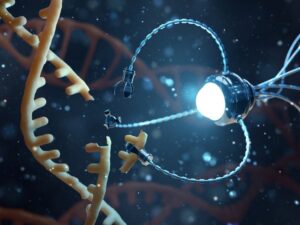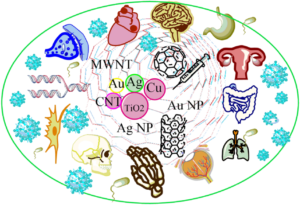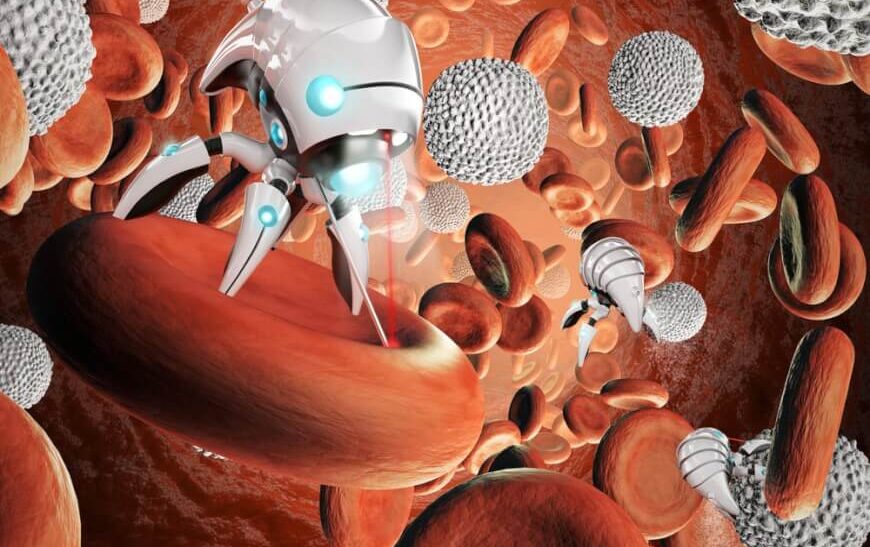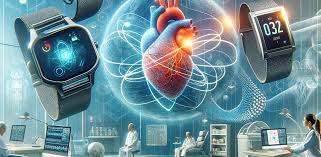Imagine a world where medicine is transformed by the tiniest of tools. Nanotechnology, the science of manipulating matter at an atomic and molecular scale, has emerged as a game changer in healthcare. It’s not just about small sizes; it’s about big solutions to some of our most pressing medical challenges.
From targeted drug delivery systems that hit disease cells precisely to innovative diagnostic methods that can detect conditions much earlier than traditional technologies, nanotechnology in medicine promises to revolutionize how we approach health and healing. As we delve into this fascinating field, you’ll discover its history, current applications, and what the future holds for these tiny tools making enormous impacts. Get ready to explore the incredible intersection of nanotechnology and medicine!
What is Nanotechnology?
Nanotechnology is the study and application of extremely small things, typically at a scale of 1 to 100 nanometers. To put that into perspective, a single human hair is about 80,000 to 100,000 nanometers wide.
This field bridges multiple disciplines like physics, chemistry, biology, and engineering. By manipulating materials at this minuscule level, scientists can create new properties and functions that are unattainable with larger structures.
One remarkable aspect of nanotechnology is its ability to enhance the performance of existing materials. For example, nanoparticles can increase strength or improve conductivity in applications ranging from electronics to medicine.
In healthcare specifically, these tiny tools hold the potential for breakthroughs in drug delivery systems and diagnostic techniques. The promise lies not just in their size but also in their transformative capabilities across various sectors.
History and Development of Nanotechnology in Medicine
The roots of nanotechnology can be traced back to the 1980s, when scientists began to explore materials at the molecular level. This period marked a significant shift in how researchers viewed small-scale structures.
In medicine, early applications focused on drug delivery systems. Researchers experimented with nanoparticles that could transport medications directly to diseased cells, minimizing side effects and maximizing therapeutic impact.
By the late 1990s, advancements in imaging technologies further propelled developments. Techniques like atomic force microscopy allowed scientists to visualize and manipulate nanoscale materials more effectively.
As we entered the 21st century, clinical trials emerged showcasing nanotechnology’s potential in diagnosing cancer earlier and improving treatment efficacy.
Innovations continued rapidly, leading to collaborations across disciplines—combining chemistry, biology, physics, and engineering—to harness tiny tools for big solutions in medical science.
How Does Nanotechnology Work in Medicine?
Nanotechnology works in medicine by manipulating materials at an incredibly small scale—typically between 1 and 100 nanometers. At this size, substances exhibit unique physical and chemical properties that can be harnessed for various medical applications.
One of the key mechanisms is targeted drug delivery. Nanoparticles can be engineered to carry drugs directly to diseased cells, minimizing side effects and maximizing therapeutic effects. This precision leads to more effective treatments with fewer complications.
Additionally, nanoparticles are used in imaging techniques, enhancing the contrast of scans like MRI or PET. They help doctors visualize tumors or other abnormalities more clearly than traditional methods.
Furthermore, nanoscale tools can facilitate early disease detection through biosensors that identify biomarkers associated with specific conditions. This proactive approach allows for timely intervention and improved patient outcomes.
Advantages and Benefits of Using Nanotechnology in Medicine
 Nanotechnology presents transformative advantages in the field of medicine. One significant benefit is targeted drug delivery. Tiny particles can be engineered to deliver medication directly to affected cells, minimizing side effects and maximizing therapeutic effectiveness.
Nanotechnology presents transformative advantages in the field of medicine. One significant benefit is targeted drug delivery. Tiny particles can be engineered to deliver medication directly to affected cells, minimizing side effects and maximizing therapeutic effectiveness.
Additionally, nanotechnology enhances diagnostic capabilities. Nan sensors can detect diseases at much earlier stages than traditional methods, allowing for prompt intervention when it’s most effective.
Another advantage lies in improved imaging techniques. Nanoparticles improve contrast in medical imaging scans, making it easier for healthcare professionals to identify issues quickly.
Furthermore, the versatility of nanoparticles allows for a range of applications—from cancer treatment to vaccine development—making them invaluable tools in modern medicine’s toolkit.
Their small size means they can navigate complex biological environments more efficiently than larger molecules or conventional treatments. This opens doors to innovative solutions that were previously unattainable.
Current Applications of Nanotechnology in Medicine
 Nanotechnology is making waves in various areas of medicine. One notable application is targeted drug delivery. Tiny nanoparticles can transport medications directly to diseased cells, minimizing side effects and enhancing treatment efficacy.
Nanotechnology is making waves in various areas of medicine. One notable application is targeted drug delivery. Tiny nanoparticles can transport medications directly to diseased cells, minimizing side effects and enhancing treatment efficacy.
Another exciting use is in imaging techniques. Nanoscale materials improve the resolution of medical imaging, allowing for earlier detection of conditions like cancer or heart disease.
Diagnostics benefit significantly from nanotechnology as well. Biosensors at the nanoscale can detect biomarkers in blood samples quickly and accurately, enabling rapid diagnosis.
Moreover, nanotech plays a role in regenerative medicine by promoting tissue repair and growth. Nanomaterials serve as scaffolds that support cell adhesion and proliferation.
The versatility of these tiny tools opens up avenues for developing innovative solutions across numerous medical fields.
The Future of Nanotechnology in Medicine
The future of nanotechnology in medicine holds incredible promise. Researchers are exploring ways to enhance drug delivery systems, making treatments more effective by targeting specific cells or tissues.
Imagine tiny robots navigating through the bloodstream, delivering medication precisely where needed. This could minimize side effects and maximize healing.
Advancements in diagnostic tools also show potential. Nanotechnology can improve imaging techniques, enabling earlier detection of diseases like cancer. Early intervention often leads to better outcomes.
Furthermore, personalized medicine may see a boost from these tiny tools. Tailoring treatments based on individual genetic profiles could become commonplace, leading to higher success rates.
As innovations continue to emerge, ethical considerations will be paramount. Balancing technological capabilities with safety and accessibility will shape how society embraces these breakthroughs in healthcare. The journey is just beginning, but the horizon looks bright for merging nanoscale science with medicine’s vast landscape.
Ethical Considerations and Concerns
As nanotechnology continues to advance in medicine, ethical considerations become increasingly relevant. The tiny tools of this field hold immense potential but also raise questions about safety and regulation.
One major concern is the biocompatibility of nanoparticles. How will they interact with human biology? Potential long-term effects are still largely unknown. This uncertainty prompts discussions on informed consent for patients involved in clinical trials.
Privacy issues also arise when using nanotechnology for diagnostics or treatment monitoring. Collecting personal health data can lead to misuse if not handled properly. Ensuring that patient information remains confidential is crucial.
Furthermore, there’s a risk of unequal access to these medical innovations. If only affluent individuals benefit from advancements in nanotechnology, health disparities may widen.
These ethical dilemmas require careful consideration as we navigate the future landscape of medicine powered by tiny solutions.
Conclusion
Nanotechnology is a rapidly evolving field that offers incredible potential in medicine. The ability to manipulate matter at an atomic or molecular scale opens doors to innovative treatments and diagnostics. As we’ve explored, the history of this technology highlights its transformative journey from concept to practical application.
The mechanisms behind nanotechnology are fascinating, involving tiny tools designed for precision targeting in medical therapies. These advancements present numerous advantages, including enhanced drug delivery and reduced side effects. Moreover, current applications demonstrate tangible benefits across various areas, such as cancer treatment and regenerative medicine.
Looking ahead, the future of nanotechnology in medicine appears promising. Ongoing research continues to push boundaries, paving the way for breakthroughs that could change healthcare paradigms dramatically.
However, alongside these advancements come ethical considerations that cannot be overlooked. As with any powerful tool, it’s vital to address concerns regarding safety and accessibility.
As we stand on the brink of a new era in medical science driven by tiny tools offering big solutions, embracing responsible innovation will play a crucial role in shaping the future landscape of healthcare.









